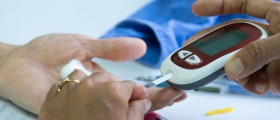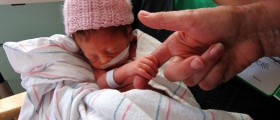
What is Usher’s Syndrome?
Usher’s syndrome is a debilitating disorder caused bygenetic anomalies. Individuals who are affected are born deaf and predisposedto lose vision in the course of time. Children learn sigh language as the main form ofcommunication. The gradual loss of sight usually begins in late childhood, and the sign language or lip reading are no longer employed. The balance of Usher syndrome patients is veryimpaired and in turn their overall ability to live independently is lessened. Mostindividuals with vision problems suffer from balance issues, as they are simplyunable to tell their exact location or where they need to go. Further, hearing defects impact the brain’sability to locate the head and rest of the body, and position themin comparison to other objects. In addition, there are three distinct types ofthe syndrome, which differ depending on the combination of the genes’interactions. If an individual is affected by the first type he or she ishearing impaired from birth, has weak balance and walking difficulties, and islikely to lose sight before reaching 10 years of age. Also, such persons have speech problems, asthey are unable to hear sounds and language. Sign language is usually employed before thesight begins to deteriorate. The second type of Usher’s syndrome is less severeand is manifested by mild to severe deafness, unaffected balance, and the onsetof vision problems in late puberty. Lastly, the third sort of Usher’s syndromeconsists of relatively normal hearing, balance, and vision up until midadulthood, when all three elements begin to regress. At birth, the child has normal or close tonormal hearing, vision, and balance. Asfar as the current research on Usher’s syndrome goes most of it is focused on thegenetics behind it, primarily on identifying all the genes which are involvedas well as the means through which they function. The primary aim of theresearch is to improve future genetic scanning for individuals planning toconceive children as well as issuing an early diagnosis. Current research isalso being performed on animals, mostly mice. Another aspect of clinical trialsis focused on better prevention and treatment of the loss of vision, whichusually occurs some time later in life of a patient. As a result, the researchers are able to perform longitudinal vision studies and follow their participants from birth until they lose their ability to see. As far as specificfindings go researchers from Israel and New York were able to isolate amutation of the gene, which is one of the most commonly seen mutations in theType I Usher’s Syndrome that affects Jewish people. Researchers are also hopingto come up with better overall treatment options in the future.
How is Usher’s Syndrome Inherited?
When it comes to the genetic components of Usher’s syndromethey are autosomal recessive. In case an individual is passed on one abnormalgene he or she will only be a carrier. Such people are unlikely to developany symptoms but they can pass on the genetic defects onto their children. Ifone parent is a carrier there is a 50 percent probability that each of his or hers children will be a carrier. On the other hand, if each parent passes on onedefective gen to a child, the child will be affected by Usher’ssyndrome. The more children the carriershave the probability that each consecutive offspring is affected is 25 percent.Presently there are over 10 involved genes, out of which 7 are identified andtheir functionality is clear. As there are many possible genetic combinationswhich are likely to lead to the development of Usher’s syndrome it is fairlydifficult to identify the exact ones in every case. For similar reasons screeningfor such genes is not common practice. Further, even when it comes todiagnosing the disorder genetic testing is seldom performed and the diagnosisis formed based on the underlying symptoms.
Treatment for Usher’s Syndrome
Presently, the cure for Usher’s syndrome does not exist.However, as far as the treatment goes it is best that the condition bediagnosed as early as possible so that proper education can begin for both theaffected person and everyone close who will be helping and taking care of thepatient. As far as the hearing issue goes there are various types of aids andimplants that the patients usually use. Further, there is also training in signlanguage in which everyone intimately involved should participate. Physiotherapy is also involved to aid theindividual with movement and balance. Inaddition, results of long term research studies suggest that higher portions ofVitamin A taken daily can delay the onset of vision impairment. The studieswere not performed on patients suffering from the first type of Usher’s.Persons who opt for the Vitamin A supplements should consult with their primaryhealth care provider. It should be notedthat women who are contemplating conceiving a child should not take the supplementsof Vitamin A for at least a few months before the pregnancy.

















Your thoughts on this
Loading...